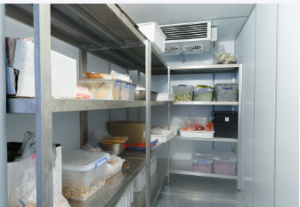Industrial refrigeration is an essential aspect of our lives. It is used in several different industries. One example of this is in the food industry, where it helps maintain the freshness of products. Other industries that use industrial refrigeration are brewing and the energy sector. Various refrigerants are used in this type of refrigeration. These refrigerants include carbon dioxide, nitrogen, nitrous oxide, ammonia, water and steam.
 Common refrigerants used in industrial refrigeration
Common refrigerants used in industrial refrigeration
In ColdLogic industrial refrigeration Melbourne, refrigerants transfer heat from one area to another. The most common types of refrigerants are hydrocarbons and HFCs. These refrigerants are used in various applications, such as commercial air conditioning systems, direct expansion refrigeration stations, chillers and heat pumps. However, they also have a significant impact on the environment. A number of these refrigerants are hazardous and contribute to global warming. Fortunately, several natural and low GWP refrigerants are available to the industry.
R-410A is a popular hydrocarbon refrigerant commonly found in light commercial air conditioners. Unlike other types of refrigerants, R-410A has a zero ozone depletion potential. It is important to keep this in mind when considering replacing existing equipment. R-410A is especially critical in the U.S. because it can only be replaced by modifying existing equipment.
A significant concern with HFCs is the risk of ozone depletion. Because of this, the United States has restricted the use of HFC refrigerants. Fortunately, several low GWP refrigerants are available for commercial use that are safe for ozone layer protection. Another option is to use HFC/HFO blends. They offer similar energy efficiency to R-134a.
The most popular and widely used refrigerants are R-32, R-134a and R-410A. These refrigerants are considered replacement refrigerant gases. Although they have relatively high Global Warming Potential, they are not as dangerous as other refrigerants.
Increasing awareness of the impact of refrigerants on the ozone layer has led to the creation of regulations and legislation in many countries. \
These regulations require the use of qualified engineers to handle refrigerants. Many of these refrigerants are flammable. It is, therefore, essential that refrigerants are run by engineers who are trained in the proper handling of these gases.
Another concern with refrigerants is that they undergo phase transitions. Each time they are heated to a specific temperature, they will change to a gas and cool down. As a result, these gases are highly explosive. Additionally, they can contain toxic elements that can contaminate the atmosphere.
Various natural and low GWP refrigerants, such as CO2, are available. The U.S. Army is investigating the possibility of using CO2 as a substitute for current HFC refrigerants in commercial and military refrigeration equipment.
Common applications of industrial refrigeration
Industrial refrigeration is an integral part of cold storage and food production. It involves many processes, from the removal of heat to the preservation of temperature-sensitive products. These systems help keep food safe, prevent microbiological contamination, and preserve the taste and quality of beverages.
Refrigeration is a complex process and has multiple levels of installation. It is used in petrochemicals, manufacturing, and food processing industries. Different refrigeration systems are available and usually designed to fit the customer’s specific needs.
Many types of refrigerants include hydrocarbons, carbon dioxide, and ammonia. The most common industrial refrigerants are R-134a, a free halogen air-cooled gas, and ammonia. Other refrigerants are available but should be avoided because of possible chemical contamination.
ColdLogic industrial refrigeration Melbourne is a significant business sector. It is used for cooling large-scale production, transporting and storing temperature-sensitive products, and lowering the temperature of various machinery. Since its inception in the early 20th century, refrigeration has become a critical component of several industries.
Today, food and beverage (F&B) processing is the most common industrial refrigeration application. Refrigeration is necessary for preserving the taste and quality of beverages and is also used in mass food production. Cheese, wine, spirits, and other products must be kept in the proper temperature range to prevent spoilage. Cooling is essential for maintaining poultry safe and sanitary, reducing the risk of microbiological contamination.
Industrial refrigeration can be complex, requiring a specialised set of skills to operate correctly. Many of the processes involved are based on absorption and compression cycles. They are designed to optimise pumping, reduce maintenance efforts, and optimise the temperature of the product being transported. A closed-loop system, the most common type, uses one pump.
While there is no doubt that industrial refrigeration is a significant contributor to global energy consumption, it is not the only energy-consuming product globally. Most refrigeration gases significantly impact the ozone layer when released into the atmosphere. To address this issue, the international community signed the Montreal Protocol in 1987. It was the first and most far-reaching agreement to reduce ozone-depleting substances (ODS) levels.
The most crucial point is that the industrial refrigeration industry is highly concentrated. It is difficult for a business owner to be in the office all the time. That is why choosing a service provider that can handle the job is essential. When selecting a vendor, check out the company’s customer service and warranty history. Ensure that you opt for an established company.
The best way to do it is to select a service provider that offers onsite service and will monitor your refrigeration system’s performance. They will then be able to detect problems early. It is important because it can prevent significant downtime for the system. Another advantage is that they can provide various maintenance programs to ensure your equipment is always in the best condition.